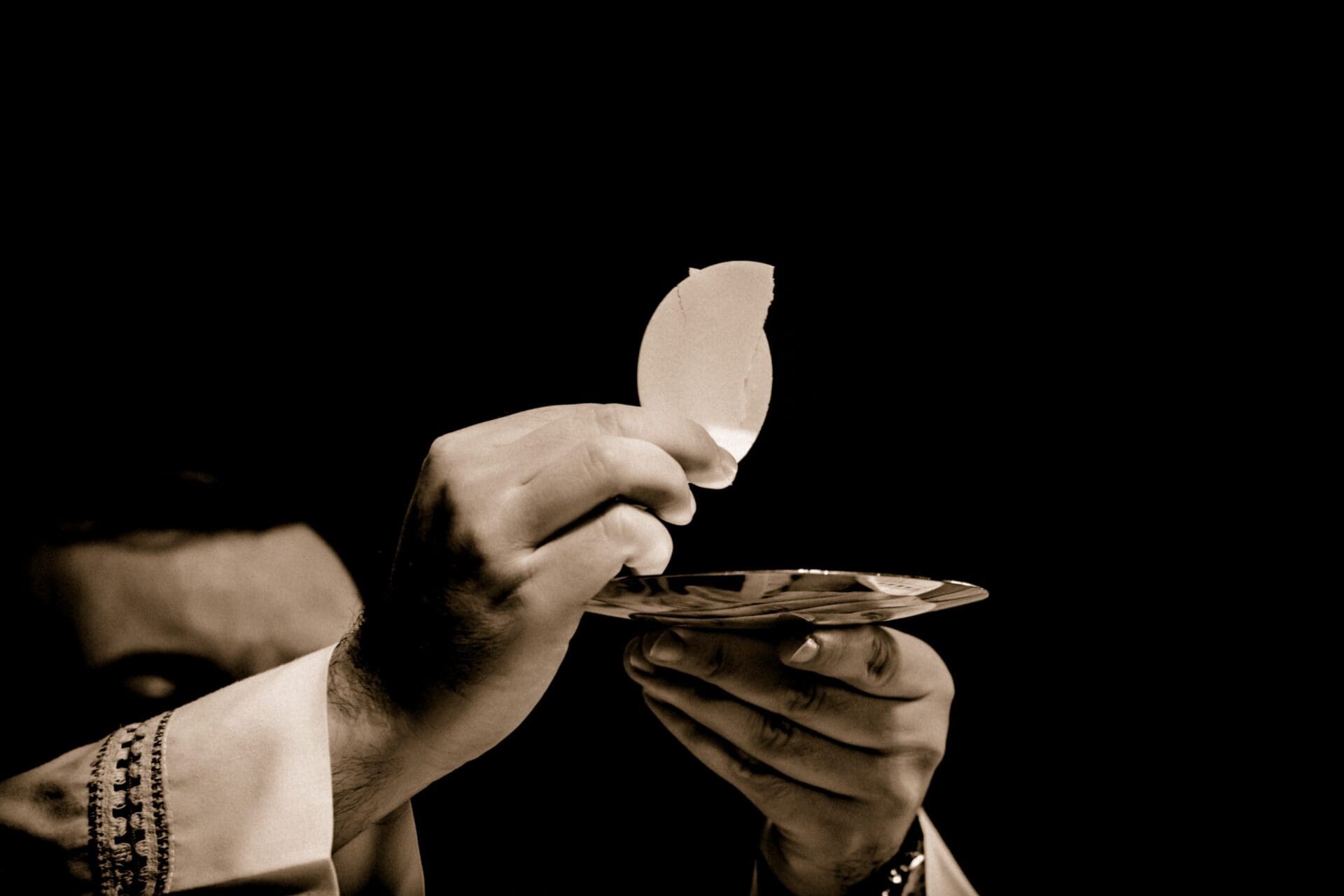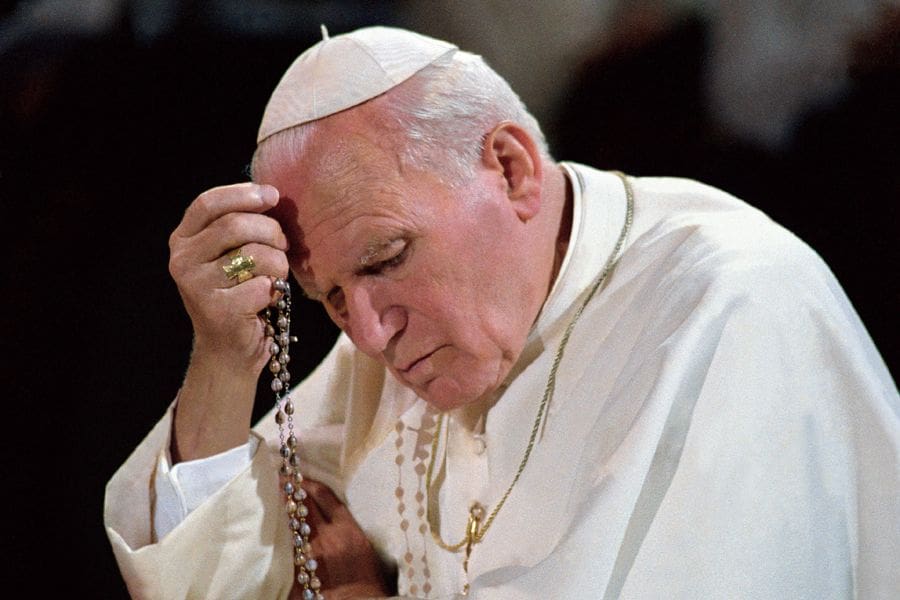A: Over the years, questions have arisen about the validity of the bread used for the celebration of the Mass. The 1983 Code of Canon Law in canon 924 §2 requires that the “bread must be only wheat and recently made so that there is no danger of spoiling.” The General Instruction of the Roman Missal (GIRM) clarifies that, according to the ancient tradition of the Latin Church, the bread must be unleavened. The GIRM goes on to say that diligent care should be taken to ensure that the bread intended for the Eucharist is kept in a perfect state of conservation, meaning that the bread is not spoiled or has become too hard to be broken easily. The Apostolic See instructed that bread which tastes like unbaked flour or which becomes hard too soon and cannot immediately be eaten, should be completely avoided.
Recall that the Church speaks of the constituent parts of her sacraments—such as matter and form—in terms of validity and liceity. In terms of sacramental matter, valid matter is necessary for the sacrament to be a real, actual presentation of Christ and his saving grace; invalid matter renders the sacrament null and void. Licit matter is not only valid material for use in a particular sacrament (e.g., water at baptism), but also adheres to the other ecclesial laws concerning it (e.g., it is also “natural and clean” [General Introduction to Christian Initiation, 18]); illicit matter does not nullify the sacrament, even though its use is contrary to Church law. Ultimately, both valid and licit matter make Christ present and active in the most efficacious and fruitful way.
For validity, only wheat (grain from the genus Triticum) may be used in the bread. St. Thomas Aquinas argued that if a small quantity of another grain be mixed with a much greater quantity of wheat, bread made from that mixture would be valid matter. This apparently comes from a lack of availability in the Middle Ages to obtain 100% pure wheat flour. In a 1929 instruction, the Apostolic See clarified that bread made of any substance other than wheat is invalid matter, as is bread to which has been added such a great quantity of another substance that it can no longer be considered wheat bread in the common estimation. Nonetheless, a further instruction from 1980 notes that no other ingredients are to be added to the wheaten flour and water, and current canon law notes that only (mere) wheat is to be used; therefore, current law is that only pure wheat flour with no additives or other grains present is valid matter. It would be a grave abuse to introduce other substances, such as fruit, sugar, or honey, into altar bread since this bread may be invalid matter according to current norms.
If the bread has spoiled so much that the continuity of its parts is destroyed, and the taste, color, and other accidents are changed, such bread would also be invalid. However, Thomas notes that if the bread has spoiled but not so much as to as to alter the species, but merely to be disposed towards corruption, this bread is valid but illicit (nonetheless, according to St. Thomas Aquinas, such bread is sinful to use because of irreverence [see STh, IIIa, q. 74, a. 3]). At least one early 20th-century instruction from the Apostolic See condemned obtaining a sufficient amount of altar bread to last for two or three months, and some commentators note that the requirement of celebrating Mass at least twice a month in those places where the Eucharist is reserved indicates that the altar bread might spoil after two weeks. With the modern manufacture of altar bread and the use of refrigeration or freezing, this time period should now be considered extended; however, climate, especially humidity, plays a large part in keeping the altar bread fresh.
In the Latin Church, unleavened bread is required for liceity. In the Eastern Churches, leavened bread is required for liceity. In the Decretals of Gregory IX that formed part of medieval canon law, priests should be punished “for presuming to celebrate using fermented bread.” Valid and licit matter should always be used, apart from extreme necessity. As previously noted, illicit matter, while valid, goes against the laws and rubrics and should always be avoided.
Much has been written about the GIRM’s requirement that the material for the Eucharistic celebration truly have the appearance of food and that the altar bread be fashioned in such a way that the priest is truly able to break it into parts and distribute these to at least some of the faithful. Over the years, the Apostolic See has attempted to clarify this by indicating that the “appearance” of bread applies to its color, taste, and texture rather than to its form or shape. As one instruction from the Apostolic See puts it, “This [actual food] is to be understood as linked to the consistency of the bread, and not to its form, which remains the traditional one” (1980 Instruction Inæstimabile Donum). This “traditional form” refers to either small hosts for the communion of the faithful or a larger form of host which is then to be broken into sections. The Apostolic See is careful to note that when manufacturing altar bread, the preparation requires attentive care to ensure that the product does not detract from the dignity due to the Eucharistic bread, that it can be broken in a dignified way, that it does not give rise to excessive fragments, and does not offend the sensibilities of the faithful when they eat it. The 2004 Instruction Redemptionis Sacramentum notes that small hosts requiring no further fraction ought customarily to be used for the most part.
No treatment of altar bread would be complete without considering low-gluten altar breads. It must first be stated that altar bread that is completely gluten-free is invalid matter for the Eucharist, since gluten is considered a constituent part of wheat bread. However, low-gluten hosts (partially gluten-free) are valid matter, provided they contain a sufficient amount of gluten to obtain the confection of bread without the addition of foreign materials and without the use of procedures that would alter the nature of bread. These breads are considered to be made from wheat starch (that is, wheat flour from which much of the gluten has been removed). As the United States Conference of Catholic Bishops notes, the sufficient amount of gluten necessary for validity in such bread is not determined by minimum percentage or weight. A brief survey of low-gluten hosts available have less than 20 parts per million of gluten (which, since 2013, has been the FDA threshold in the United States for the label of “gluten-free”). Priests and others must be very careful to purchase only low-gluten hosts made of only wheat and water (which may be advertised as “gluten-free”) and not wheat-free hosts made with rice or potato starch (which would be invalid matter).
While previous norms required the presentation of a medical certificate to one’s ordinary to receive permission to use low-gluten hosts, such presentation is no longer required. One’s ordinary is competent to give permission for an individual priest or layperson to use low-gluten hosts. Permission can be granted habitually, for as long as the situation continues which occasioned the granting of permission. The authority to permit the lay faithful to use low-gluten hosts may be delegated to pastors under canon 137 §1 of the Code of Canon Law.
The fact that permission must be given by one’s ordinary or his delegate should not be overlooked; for, common practice in the United States seems to be that anyone who wants to receive a low-gluten host can receive one without permission being granted. Ordinaries should be attentive to the requirements and, as some dioceses have done, delegate the permission to a priest with knowledge of celiac disease, gluten intolerance, and sacramental theology or, at the very least, train pastors in proper procedures and delegate pastors to give permission. The concern about cross contamination of gluten should not be overlooked and it would seem part of the reason permission is to be given is to inform the communicant about the procedures in place.
Ensuring proper valid matter for the Eucharist is an important task. The 2017 Circular Letter to Bishops on the Bread and Wine for the Eucharist noted that altar bread should obviously be made by those who are not only distinguished by their integrity, but also skilled in making them and furnished with suitable tools.
—Answered by Father Alan Guanella
Diocese of La Crosse, WI


